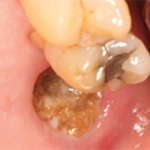Glucocorticoids are widely prescribed by rheumatologists, and the effects of daily and cumulative doses of these drugs on bone mineral density (BMD) are important elements of a draft clinical guideline document presented on Nov. 13 at the 2016 ACR/ARHP Annual Meeting in Washington, D.C.
Leaders of the ACR guideline project discussed their recommendations at the session, Glucocorticoid-Induced Osteoporosis Prevention and Treatment: An Updated ACR Clinical Guideline. General osteoporosis treatment recommendations from the National Osteoporosis Foundation were published in 2014, but the ACR has not published a new guideline for this specific patient population since 2010.1 These draft recommendations are presently being reviewed by the ACR for final approval and are anticipated to be published in early 2017.
Fracture Risk Factors
Patients vary greatly in their major osteoporotic fracture risk due to age, sex, race, dosage levels and other factors, said Lenore Buckley, MD, MPH, the project’s principal investigator and clinical chief of rheumatology at Yale University School of Medicine, New Haven, Conn.

Lenore Buckley, MD, MPH, the project’s principal investigator and clinical chief of rheumatology at Yale University School of Medicine, New Haven, Conn.
“All of these factors are important to take into account as you look at the fracture risk for an individual patient,” she said.
About 1% of the U.S. population is currently treated with chronic glucocorticoids, said Dr. Buckley.2 “We also know that bone loss is greatest in the first year of use and that the greatest loss is in the vertebral bone. We know the predictors of fractures include the pattern of glucocorticoid use, the dose and the duration.”
Vertebral fracture risk rises dramatically in patients who take high doses, or ≥7.5 mg/day and higher, and in those who have received a high cumulative dose over many years, or ≥5 gm.3 The guideline voting panel looked closely at available evidence on specific patient populations’ bone density changes and fracture risk, especially younger patients on very high doses, or >30 mg/day.
“Although very high doses of glucocorticoids are used only in a small [percentage] of the patients, the risk of fracture significantly increases with long-term, high-dose glucocorticoid treatment,” said Dr. Buckley. The average patient isn’t in this very high-dose group, but this group is where many fractures occur. As the dose increases, the risk increases. It is not unusual for rheumatologists to prescribe high doses, she added. On the other hand, evidence shows that once the patient’s glucocorticoid dose is discontinued, bone density can recover. “So the ability of bone density to improve spontaneously is an important consideration in younger patients,” she said.
Data-Intensive Methodology
The evidence review was conducted using the GRADE methodology, which is designed to be transparent and data driven, and is used worldwide for conducting consensus development, said Timothy E. McAlindon, MD, MPH, the literature review team leader and chief of rheumatology at Tufts Medical Center in Boston.
Panelists generated 203 final PICO (Population Intervention Comparator Outcomes) questions and referenced 85 publications by the end of a thorough review process, he said. Different patient populations’ fracture risks were considered, including adults older or younger than 40, women of childbearing potential for whom some osteoporosis treatments might have maternal or fetal risks, adults on very high-dose glucocorticoids, adults who have received organ transplants and children ages 4–17.
According to Dr. McAlindon, intervention comparators included:
- Calcium and vitamin D supplementation;
- Lifestyle modifications, such as smoking cessation or exercise;
- Oral and IV bisphosphonates;
- Raloxifene in postmenopausal women; and
- Teriparatide and denosumab.
Fractures were the only critically important outcomes included in rating the evidence, but other adverse events, such as upper gastrointestinal toxicity from oral bisphosphonates, were also important considerations, he said.
Use a fracture risk assessment tool such as FRAX to estimate fracture risk in patients who are 40 or older, the panel recommended. FRAX is an online-based tool that estimates risk on the basis of age, sex, weight, height, glucocorticoid use, previous fractures, BMD, smoking status and other factors. One drawback of FRAX is that it does not take glucocorticoid dose into account, said Dr. Buckley. Adjust hip fracture risk by 20% and major osteoporotic fracture risk by 15% in patients who take 7.5 mg/day or higher doses, she said.4
Fracture risk assessment for patients in all age groups should include details of glucocorticoid use; evaluation of falls, fractures and frailty; and a thorough physical exam, the panel recommended.
For adults 40 and older, add a baseline FRAX with bone mineral density (BMD) and glucocorticoid dose adjustment. Repeat BMD testing every one to three years for patients not currently on glucocorticoids, every two to three years during treatment for patients on very high doses or if there is a concern about poor adherence or absorption of osteoporosis treatments and every two to three years after completion of glucocorticoids, Dr. Buckley said.
Draft Recommendations
For all age groups, the panel’s strong recommendations are:
- Optimize calcium and vitamin D intake, and implement lifestyle modifications, such as weight-bearing and strength-building exercise, smoking cessation and limiting alcohol intake; and
- Treat men and women not of childbearing potential and who are younger than 40 years old and those 40 or older at moderate to high fracture risk with, in order of preference, oral bisphosphonates, IV bisphosphonates, teriparatide, denosumab and raloxifene, which may be used for postmenopausal women for whom none of the other medications are appropriate.
For special populations, conditional recommendations are:
- For adult women of childbearing potential at moderate to high risk who are not planning a pregnancy during osteoporosis treatment, treat with oral bisphosphonates; if an alternate option is needed due to lack of success with oral bisphosphonates, choose teriparatide, because of its short duration of action;
- For solid organ transplant patients who are continuing glucocorticoid treatment and have a GFR (glomerular filtration rate) >30, treat according to the recommendations for their age group. Evaluate renal transplant patients for metabolic bone disease, and avoid denosumab due to the lack of data about infection risk in people on multiple immunosuppressive agents;
- For children 4–17 years old, optimize calcium and vitamin D intake, and add oral bisphosphonates if the child has sustained an osteoporotic fracture and is continuing glucocorticoids at ≥0.1 mg/kg for ≥3 months. Use IV bisphosphonates if oral treatments are not appropriate for these patients; and
- For patients who are on very high-dose glucocorticoids, or ≥30 mg of prednisone and a cumulative dose of >5 g in a year, and are 30 or older, treat with oral bisphosphonates.
Special considerations during osteoporosis treatment are:
- For those who fail treatment or have a fracture after 18 months of oral bisphosphonate or have a significant BMD loss of more than 10% a year, treat with another class of medications, such as teriparatide or denosumab, or use IV bisphosphonates if failure is due to poor adherence or absorption;
- For patients who have completed oral bisphosphonate treatment but remain at high fracture risk, continue on active treatment if they remain at high risk; and
- For patients who have discontinued glucocorticoid treatment, stop osteoporosis treatment if reassessment shows they are now at low risk, or complete the treatment if they are at moderate to high risk for fracture.
Most of the recommendations were conditional, rather than strong, due to a shortage of direct evidence of fracture risk in populations treated with glucocorticoids, said Dr. Buckley. These new recommendations emphasize clinical decision making over time and attention to the considerations of special patient populations. “We thought their clinical risk was significant,” she said.
Missed This Important Session?
If you were unable to attend the session, Glucocorticoid-Induced Osteoporosis Prevention and Treatment: A New ACR Clinical Guideline, during the 2016 ACR/ARHP Annual Meeting, catch it now on SessionSelect.
Susan Bernstein is a freelance medical journalist based in Atlanta.
References
- Cosman F, de Beur SJ, Le Boff MS, et al. Clinician’s guide to prevention and treatment of osteoporosis. Osteoporos Int. 2014 Oct;25(10):2359–2381.
- Overman RA, Yeh JY, Deal CL. Prevalence of oral glucocorticoid usage in the United States: A general population perspective. Arthritis Care Res (Hoboken). 2013 Feb;65(2):294-298.
- Van Staa TP, Leufkens HG, Abenhaim L, et al. Oral corticosteroids and fracture risk: relationship to daily and cumulative doses. Rheumatology (Oxford). 2000 Dec;39(12):1383–1389.
- Kanis JA, Johansson H, Oden A, et al. Guidance for the adjustment of FRAX according to the dose of glucocorticoids. Osteoporos Int. 2011 Mar;22(3):809–816.

